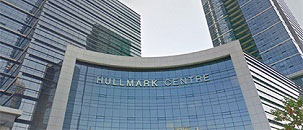首页 > SAT/SSAT
2016年5月18日SAT考试阅读题
今天为大家带来2016年5月18日SAT考试阅读题附答案和解析,希望可以帮助到考生们。
SAT考试阅读题目:Critical Reading>Select an Answer
Plants, and all other living things, require nitrogen for growth; it is an essential component of nucleic acids and proteins. Although air is mostly nitrogen, this gaseous form is inaccessible to plants and must be fixed into ammonium to render it biologically relevant. Soil bacteria called rhizobia fix nitrogen, but to do this they must first take up residence inside the roots of legumes like pea, alfalfa, clover, and soybean.
Soon after a legume begins to grow, rhizobia invade its root hairs and multiply, causing the plant to form specialized organs—nodules—that contain the proliferating bacteria. This symbiotic arrangement benefits both parties: legumes can thrive without nitrogen fertilizers only if they have functional nitrogen-fixing nodules, while the bacteria receive the energy needed to multiply and fix nitrogen from the plant. When the plant dies, the fixed nitrogen is released into the soil so other plants can use it. This process has significant implications for agriculture, as nitrogen is the most common nutrient deficient in the earth's soil and, thus, the one most commonly supplied by chemical fertilizers.
Rhizobia are a diverse group taxonomically, genetically, and metabolically. They can be found in distant genera. Their symbiotic trait appears to have arisen independently multiple times by horizontal transfer of genes. However, it is not thought that this horizontal gene transfer is sufficient to confer symbiosis, or to explain the biodiversity of rhizobia. There must be selective pressures preventing or permitting the expression of the acquired symbiosis trait and adaptive mechanisms to deal with these pressures. But neither the pressures nor the measures taken to circumvent them are known.
What can reasonably be inferred about the fixed nitrogen released when a plant dies?
(A) It is biologically insignificant because it reverts to its gaseous form.
(B) It is not sufficient to maintain adequate nitrogen levels in soil.
(C) It is less useful for other plants than the nitrogen found in chemical fertilizers.
(D) It is not a consideration in farmers’ decisions regarding agricultural practices.
答案:B
解析:
Choice B is the best answer. The author states that soil commonly is nitrogen-deficient and that nitrogen is often supplied by fertilizers, even though the fixed nitrogen released when legume plants with nitrogen-fixing nodules die can be used by other plants. This suggests that the fixed nitrogen those legume plants release is not enough to supply all of the nitrogen that is needed in soil; fertilizers are needed to address the remaining nitrogen deficiency

欲了解更多雅思、托福、 SAT、SSAT、 COPE等语言类标准化考试培训课程及加拿大名校申请服务,欢迎就近至环球教育多伦多学校 - 北约克North York校区、列治文山Richmond Hill校区进行详细咨询,或访问多伦多环球教育唯一官方网站: http://toronto.gedu.org;
同时您也可以扫描环球教育加拿大官方微信二维码,与雅思大神级名师互动问答,考前免费预测答疑,为您的考试保驾护航。 请致电官方咨询专线647-352-6616预约免费入学测评与试听服务。







